Discover the untold story of how Freemasons helped Southern Americans immigrate to Brazil post-Civil War, fostering economic and educational growth in Santa Bárbara d’Oeste and Americana.
Few people know about the efforts that the Freemasons made to help a group of southern Americans immigrate to Brazil after the end of the American Civil War, thereby fostering economic, agricultural, industrial and educational development in the region of Santa Bárbara d’Oeste – SP and the current city of Americana – SP.
As a continuation of this story, I will explain how the American colony and its Masonic lodge ensured the secularity of the Brazilian State.

IMAGE: author’s collection
In 1866, the Political Constitution of the Empire of Brazil of 1824 was in force, granted by our emperor and Brother Dom Pedro I (known as Guatimozim), and its Article 5 stated:
“The Roman Catholic Apostolic Religion will continue to be the Religion of the Empire. All other Religions will be permitted to be worshipped at home, or privately in houses designated for this purpose, without any external form of the Temple.”
Therefore, Protestant cults had no recognition or legal prerogatives. It is worth remembering that births were proven by a Baptism Certificate; marriages by a Marriage Certificate, and deaths by a declaration of death, all issued by the Catholic Church.
Burials of non-Catholics were not permitted in public cemeteries or in cemeteries where Catholics were present. The suggestion was that they be buried with animals or in distant lands. Schools were entirely Catholic and taught this faith.
Any and all religions, except those that are constitutional, had to keep their meetings at home, and were prohibited from using bells, crosses and towers, symbols exclusive to the Catholic Church.

IMAGE: author’s collection
In 1866, the first southern North Americans arrived at the port of Santos-SP, most of whom came from the state of Alabama.
The first families were:
Baird, Bookwalter, Bowan, Broadnax, Capps, Carlton, Carr, Cullen, Daniel, Fumas, Fenley, Ferguson, Creen, Hall, Harris, Hawthorne, Holland, Jones, Keese, Kennerly, McFadden, McKnight, Meriwether, Miller, Mills, Moore, Norris, Parks, Pyles, Quillen, Rowe, Smith, Steagall, Taver, Tanner, Terrel, Thatcher, Thompson, Vaugham and Whitaker.
When they settled in the current city of Santa Bárbara d’Oeste and Americana, they realized the many challenges they had to overcome, including their faith. Belonging to the denominations: Baptist, Methodist and Presbyterian, they built two small chapels made of planks, which were disfigured due to the Political Constitution.
The first of them was in the so-called Campo, a place that served and still serves as an exclusive cemetery for Americans and their descendants.
The second was on the rural property of; Brother Joseph Henry Moore (great-great-grandfather of the author of this article), under the name of Moore’s Chapel, serving as a church and school for children.

IMAGE: author’s collection
These denominations owe much to these southern immigrant Freemasons, since Brothers and Pastors Richard Ratcliff and Robert Porter Thomas officially established the first Baptist Church on Brazilian soil on September 10, 1871, using these two improvised chapels, with 8 other Baptist Freemasons at its genesis.
The other two denominations also found refuge in the chapels: the Methodists (Brothers and Pastor Junius Estaham Newman) and the Presbyterians (Reverend Brother William Emerson and Reverend Brother William Macfadden).
They were all workers in George Washington Lodge No. 309 (York Rite), founded in 1874 in the colony. Columns B and J were kindly carved by Brother John Edward Steagall and are still in use today by the Campos Salles II lodge in the city.

IMAGE: author’s collection
I would like to highlight the information that the chapel in Campo that we know today was donated by the George Washington Lodge, after the previous one collapsed. Several Charity Trunks raised the sum of $:970$000 to build a new one, and the treasurer, Brother John F. Whitehead, decided that, at the end of 1899, the columns of the lodge had to be cut down.
The colony not only inspired faith, but also education; it gave rise to the formative flame of the Mackenzie Presbyterian University; the Methodist University and its branches for São Paulo University – USP.
There are many other stories about these immigrants that the pages of magazines and books cannot contain, but the glimpses reveal how important this colony was for the development of our country and for religious freedom, all of which was evidently inspired by our beloved brothers of the past.
Footnotes
References
Americanos em São Paulo, Edição XV – Frank Goldman
Soldado Descansa, Judith MacKnight Jones
Fraternidade Descendência Americana – Santa Bárbara d’Oeste – SP Americanos no Brasil, Camila Reis /Fernanda Marques Valente
O fim de uma história triste, Barros Ferreira
Os confederados de Americana, José Nêumanne Pinto
Americana, uma cidade que nasceu dos confederados, Stephen Bloom A epopeia dos confederados, F.S Piauí
Boletim A BIGORNA, N° 56 de 1986 – Kurt Prober
Article by: Renan Moore

Renan Williams Soglia Moore, 33 years old, Master Mason of the Fronteira Paulista Lodge 448, goddaughter of the Grand Lodge of the State of São Paulo, city of Bragança Paulista, São Paulo – Brazil.
He has a degree in History and a specialist in Art History.
Recent Articles: masonic history
 Protestantism and Masonic Influence in Brazil Discover the untold story of how Freemasons helped Southern Americans immigrate to Brazil post-Civil War, fostering economic and educational growth in Santa Bárbara d’Oeste and Americana. Learn about their pivotal role in establishing Protestant churches and ensuring the secularity of the Brazilian State amidst a Catholic-dominated society. |
 Explore the proper use of the sacred word in Brazilian Freemasonry through an analysis of Masonic literature and Bible translations. Uncover the errors in pronunciation and the need for corrections to maintain liturgical coherence in rituals. Discover insights on Masonry, rituals, and the Hebrew word Boaz. |
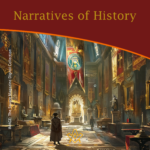 Narratives of History |
 A Very Royal Sesquicentenary |
 Unveiling the Enigma: Discover the Royal Society's Legacy and its Impact on Science. Delve into the fascinating history of the Royal Society, the prestigious UK academy shaping scientific progress since 1660. Explore its pivotal role in advancing knowledge, fostering collaboration, and unlocking the secrets of the universe. Prepare to be amazed! |
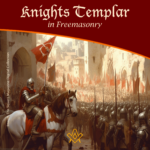 Knights Templar in Freemasonry Uncover the Mysteries of the Knights Templar in Freemasonry! Delve into the intriguing world where chivalry and symbolism intertwine. Discover the captivating rituals and ancient secrets behind the Knights Templar Masonic Orders. Explore the historical connection and delve into the enigmatic narratives that continue to fascinate enthusiasts today. Unveil the hidden truths now! |
 The Royal Arch stands as the rainbow of promise in the Ritual; it stands as the promise of the resurrection; of that which was lost and that it shall be recovered. The question arises as to whether the Master's Word was originally communicated in the Third Degree? On this point there is some diversity of opinion. Originally published in 1915, this insight into the Fourth Degree – the Holy Royal Arch – is as relevant today as it was over 100 years ago. |
 Unveiling the Mysteries of Druidism: Discover the Intriguing Connection with Freemasonry. Explore the ancient spiritual practice of Druidism and its fascinating ties to the enigmatic world of Freemasonry. Delve into the shared symbolism and rituals that have captivated minds for centuries. Unlock the secrets of these intertwined traditions today! |
 Uncover the legacy of freestone masons and their pivotal role in crafting medieval cathedrals. Discover the artistry behind their techniques, the hierarchy within their craft, and the enduring impact of their intricate carvings. A deep dive into the world of these master craftsmen awaits you! |
 Unearth the intriguing journey from Vincha Culture to Freemasonry. Discover how ancient building methods intertwine with modern Masonic philosophies. This exploration will shed light on the fascinating link between the Serbian term "shestarenye" and the symbolic significance of the compass in Freemasonry. |
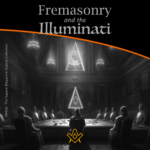 Freemasonry and the Illuminati Unravel the enigmatic world of Freemasonry and the Illuminati in our latest exposé. Dive into centuries-old mysteries, debunk conspiracy theories, and discover the truth behind these elusive societies. Are they puppet masters or mere myths? Join us as we dissect history and fact from fiction. |
 The Île des Templiers, or “Island of the Templars” lies within a leafy park in Paris. The execution site of Jacques du Molay, the last Grand Master of the Knights’ Templar bears a plaque with the epitaph ‘A cet endroit / Jacques de Molay / Dernier grand maître / de l'ordre du temple / a été brûlé le 18 Mars 1314’ (‘In this location / Jacques de Molay / Last grand master / of the order of the temple / was burned on 18 March 1314’) |
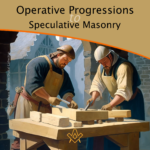 Operative Progressions to Speculative Masonry Both Operative and Speculative Masonry are an important part of the modern fraternity of Freemasonry, which combines elements of both traditions. Today, Freemasonry is a fraternity that is open to men of good character, who are interested in personal development and in making a positive contribution to their communities. |
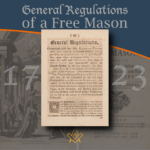 General Regulations of a Free Mason, 1723 General Regulations of a Free Mason as contained in Anderson's Constitutions of the Freemasons, published 1723. the Regulations are of great historical interest. Compiled by George Payne, the second Grand Master of the Premier Grand Lodge of England, they were printed in 1722/3, thus published just over five years after the formation of the Grand Lodge 1717. |
 The Genesis of the 1723 Book of Constitutions 2023, marks the three hundredth anniversary of the publication of the first printed Book of Constitutions of the Grand Lodge formally established in London two years previously. This is an anniversary whose significance extends beyond freemasonry. A paper by Andrew Prescott |
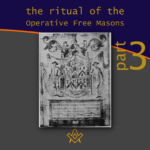 The Ritual of the Operative Free Masons - P3 Existing Operative Free Masons. The ritual I am about to refer, is that of "The Worshipful Society of Free Masons, Rough Masons, Wallers, Slaters, Paviors, Plaisterers, and Bricklayers." By Thomas Carr, M.D., P. M. Honorary Member of the Guild of Operative Free Masons |
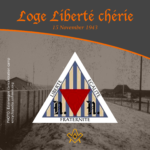 Liberté chérie was a Masonic Lodge founded in 1943 by Belgian Resistance fighters and other political prisoners at Esterwegen concentration camp. It was one of the few lodges of Freemasons founded within a Nazi concentration camp during the Second World War. |
 The Ritual of the Operative Free Masons - P2 If anyone doubts the fact that the formation of Speculative Free Masonry was due to and based upon Operative Free Masonry, it is quite easy to convince him of his error if he will only study the first Book of Constitutions. By Thomas Carr, M.D., P. M. Honorary Member of the Guild of Operative Free Masons |
 In 1881, Freemasonry rose from the ashes of a fire in the mining town of Kokomo, Summit County, Colorado. Corinthian Lodge No. 42, along with Kokomo, no longer exists but it holds the record of having been – at an elevation of 10,618 feet – the highest Masonic Lodge in the USA. |
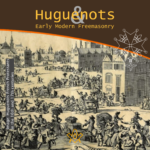 The Huguenots and Early Modern Freemasonry The Huguenots influence in the development of early modern Freemasonry at the time of the formation of the Grand Lodge in London around 1717 / 1723. |
 November is a month of reflection – perhaps due to the fact that we are getting close to the years' end – but also because Remembrance / Armistice Day (11 November) is a significant date in most countries' diaries. |
 Speculative Freemasonry, as practise by Grand Lodge of England, was officially born just over three hundred years ago, is today an international organisation, counting over six million members. It has been subjected to persecution, suppression, and abolition throughout its history. In its infancy, only a couple of decades after its official birth, it had already become a target. |
 The Ritual of the Operative Free Masons - P1 The original paper was written, first, to prove that Speculative Free Masonry was derived from Operative Free Masonry; second, to give some account of the Operative Free Masons, of their Ritual, and of their customs. By Thomas Carr, M.D., P. M. Honorary Member of the Guild of Operative Free Masons |
 American Fraternalism in the 19th and Early 20th Centuries The late 19th and early 20th centuries in the United States has been called the "Golden Age of Fraternalism." How did this come about and why was the idea of joining a fraternal organization so popular? We will explore this question and examine the regalia used by many fraternal organizations in this period. |
 Societas Draconistarum, meaning "Society of the Dragonists"– was a chivalric Order for selected nobility, founded in 1408 by Sigismund von Luxembourg, who through marriage became the King of Hungary (1387–1437) and later Holy Roman Emperor. The Order was fashioned after the military orders of the Crusades, requiring its initiates to defend the cross and fight the enemies of Christianity, in particular the Ottoman Empire. |
 The Perjured Free Mason Detected Was Samuel Prichard a perjured individual, or simply a misguided Freemason? Prichard's book "Free Masonry Dissected" published in 1730, is now used by many Masonic historians as a source of reference with regards to the introduction of the third degree into the Craft. But at the time it was published in 1730, it was not so well received by members of the Grand Lodge of England. |
 17th century and the Holy Royal Arch This article focuses on a period of transition between a point in time when we can safely and historically identify the first formation of what could be called as the ‘Royal Arch’ and the historical events that have preceded it. |
 Most Freemasons have heard the terms 'Operative' and 'Speculative' Masons, and this article helps to understand the difference: |
 Roberts' Constitutions of Freemasonry 1722 Published a year before Anderson's Constitutions, The Old Constitutions Belonging to the Ancient and Honourable SOCIETY OF Free and Accepted MASONS. Originally printed in London England; Sold by J. Roberts, in Warwick-Lane, MDCCXXII.(1722) |
 From 'Songs of religion and life', 1876 by John Stuart Blackie (1809-1895) |
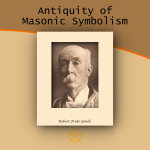 On the Antiquity of Masonic Symbolism Is the Symbolism of Masonry an inheritance derived from the old Masons who flourished before the era of the Grand Lodges (1717); or has it been borrowed from the Rosicrucians or others, after 1717? |
 Mason's Marks – from Egypt to Europe? Mason's marks have been a source of intrigue, not only to Freemasons but to historians and archaeologists. The use of simple pictograms have been employed for millennia by artisans to identify their work. But where did they originate and why? |
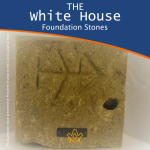 The White House Foundation Stones Further to the articles in our series on the history of the stone masons, we have a rather intriguing addition. During the 1950's renovation of the White House, President Truman retrieved more than 100 stone blocks with stonemasons marks. |
 What the Goose and Gridiron Tavern is in the ancient annals of London Freemasonry, The Green Dragon Tavern is to the memories of the Free-mason, of Boston and New England. |
 Auschwitz concentration camp: video photo article taken in 2013 |
 There are two things of importance happening this day - 27 January |
 Two approaches regarding the understanding of Freemasonry |
 Masonic Research in England c1930 An article which appeared in an American Masonic magazine, c1930 and which was reproduced in England, provoking a little controversy. |
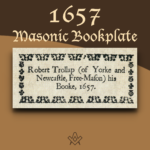 Masonic bookplates the ‘Brethren’s spiritual coats of arms and marks’ |
 The Unlawful Societies Act of 1799 Rebellious Freemasons and the 21st century |
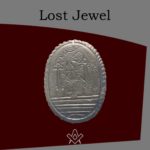 In 1912, Sarah Dowd of Dromore, Ireland, found a Masonic jewel dated 1517 - a date two hundred years before the establishment of Grand Lodge... |
 Freemasonry and Fascist Regime Interesting speech by the famous historian Prof. Aldo A. Mola, who links the fascist regime with the Masonic Associations. |
 Was famous Russian poet Alexander Pushkin a Freemason? And if so, was he a member of the lodge ‘for which all the lodges in Russia were destroyed’? |
 The Importance of Masonic Research Why is accurate - or authentic - Masonic research so important? The importance of making a daily advancement in Masonic knowledge is something that The Square is passionate about promoting. |
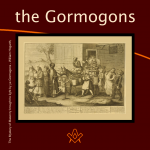 The Antient Noble Order of the Gormogons had a brief existence in the eighteenth century; they left few records or accomplishments, |
masonic knowledge
to be a better citizen of the world
share the square with two brothers

click image to open email app on mobile device






